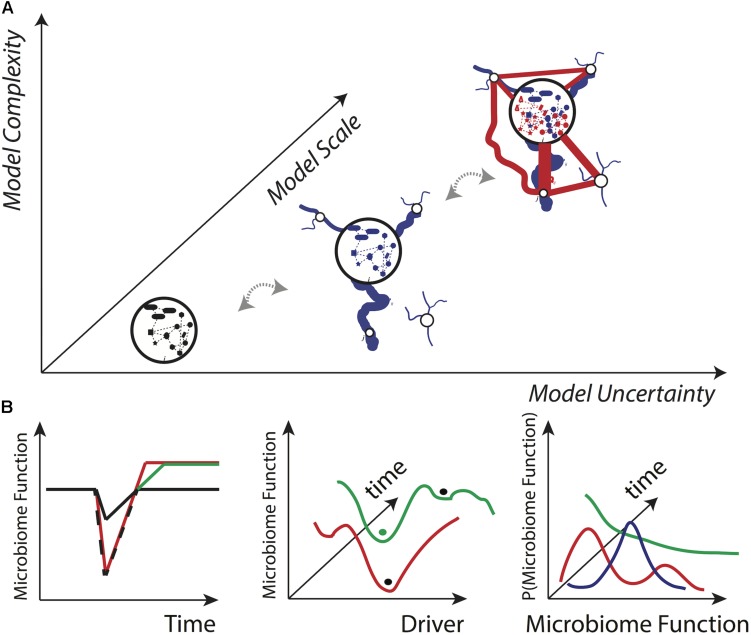FIGURE 3.
Conceptual model complexity-uncertainty-scale manifold and desirable model outputs. (A) According to general computational complexity principles, it is expected that microbiome uncertainty (information) grows with the spatio-temporal scale of analysis and the complexity of the system (data) analyzed. These principles are independent of model and microbial systems. The scale is the biological, spatial and/or temporal level of analysis and defines the sensitivity (variability) of the model. For instance, at micro-, meso-, and macro-scales the analysis can be at the individual, population and multi-population level. The scale also defines information complexity that may be related to potentially causal networks for the microbiome such as natural and human spreading networks (in blue and red). Each node of the community details a microbiome interaction network or graph. (B) Three outputs of general interest in microbiome research for assessing systemic risk and resilience that have an increasing focus on systemic properties, from left to right: microbiome feature value over time (e.g., function), microbiome feature state-space over a gradient of drivers, and systemic probability distribution of microbiome features under different scenarios.

